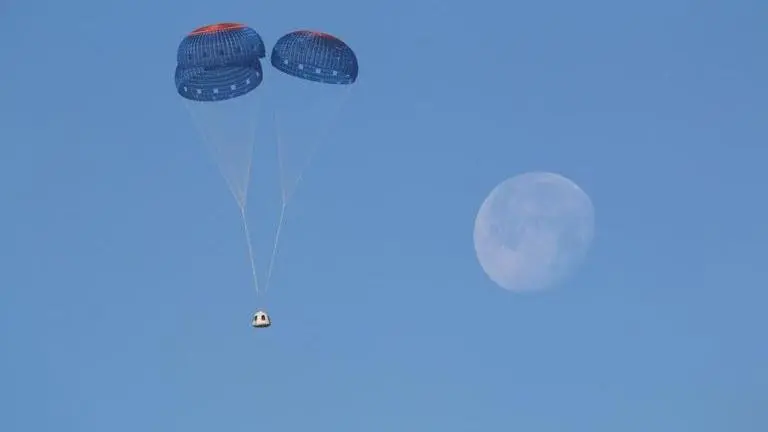Updated 12 September 2022 at 21:58 IST
Blue Origin's NS-23 mission fails after booster experiences anomaly shortly after launch
Blue Origin launched the NS-23 mission at 7:55 pm IST from West Texas, however, the booster ended up facing an anomaly. Further details are awaited.
- Science News
- 2 min read

Blue Origin’s latest New Shepard 23 (NS-23) mission did not go as planned after the booster experienced an anomaly just one minute and five seconds after liftoff. The NS-23 mission lifted off from West Texas perfectly at 7:55 pm IST after nearly an hour-long delay (from the scheduled time of 7 pm) due to undisclosed reasons followed by the mysterious disappearance of the booster.
(NS-23 mission lifts off from the West Texas site; Image: Blue Origin)
Shortly after launch, especially after the anomaly with the booster, the live broadcast of Blue Origin focused just on the New Shepard capsule which was carrying 36 science experiments as payloads. During the live webcast, the booster was seen in flames before it separated from the capsule and went out of frame.
Booster failure on today’s uncrewed flight. Escape system performed as designed. pic.twitter.com/xFDsUMONTh
— Blue Origin (@blueorigin) September 12, 2022
The booster is expected to have crashed after the New Shepard capsule activated the abort system and rocketed away from it. On the other hand, details on the payload are yet to emerge.
Advertisement
(Fire seen around the booster and capsule before stage separation; Image: Blue Origin)
"We’re responding to an issue this morning at our Launch Site One location in West Texas. More information to come as it is available", the company tweeted soon after the booster's abnormality.
Advertisement
We’re responding to an issue this morning at our Launch Site One location in West Texas. More information to come as it is available.
— Blue Origin (@blueorigin) September 12, 2022
In a second tweet, Blue Origin revealed that the escape system of the capsule worked as expected since it successfully made a soft landing after the parachute deployment. "We’re responding to an issue this morning at our Launch Site One location in West Texas. This was a payload mission with no astronauts on board. The capsule escape system functioned as designed. More information to come as it is available", the tweet read.
We’re responding to an issue this morning at our Launch Site One location in West Texas. This was a payload mission with no astronauts on board. The capsule escape system functioned as designed. More information to come as it is available.
— Blue Origin (@blueorigin) September 12, 2022
As mentioned above, NS-23 was a payload-only mission and had no astronauts on board. However, the recent incident marked the second mishap experienced by the Jeff Bezos-owned firm, the last one being the debut launch in 2015. Notably, the company uses two different New Shepard boosters and spacecraft which are used for crewed and uncrewed launches. For the NS-23 mission, the spacecraft was carrying 36 experiments, out of which 18 were funded by NASA while the rest were developed by K-12 schools, universities and STEM-focused organisations.
Published By : Harsh Vardhan
Published On: 12 September 2022 at 21:58 IST


